Thought Forms
Metro Pictures, New York
Feb. 25 - Mar. 25, 2006
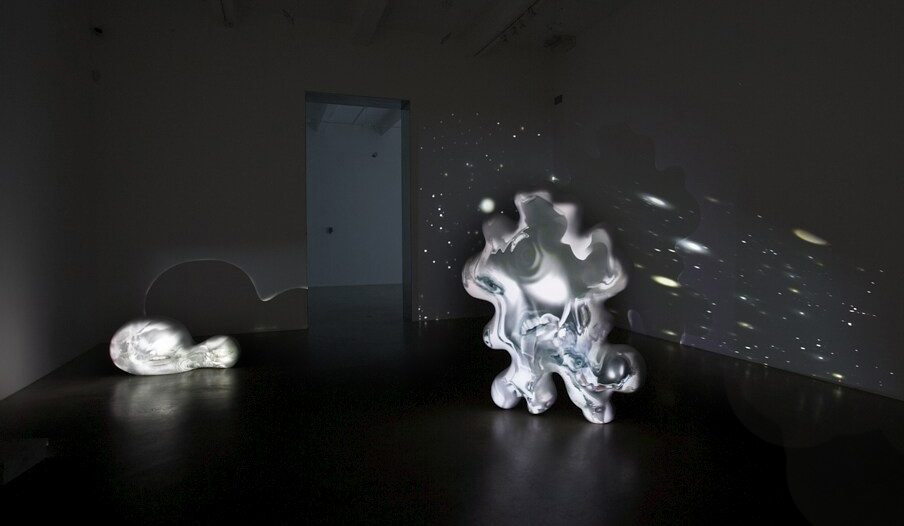
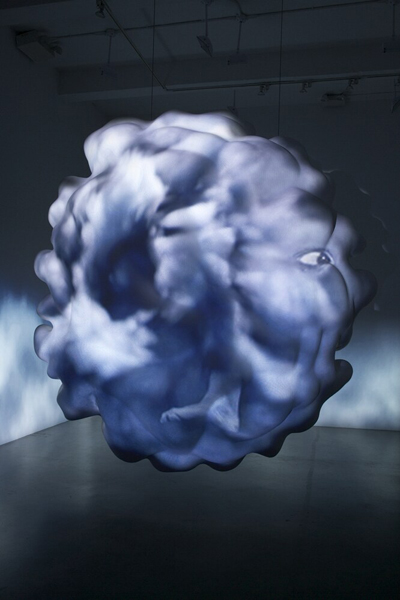
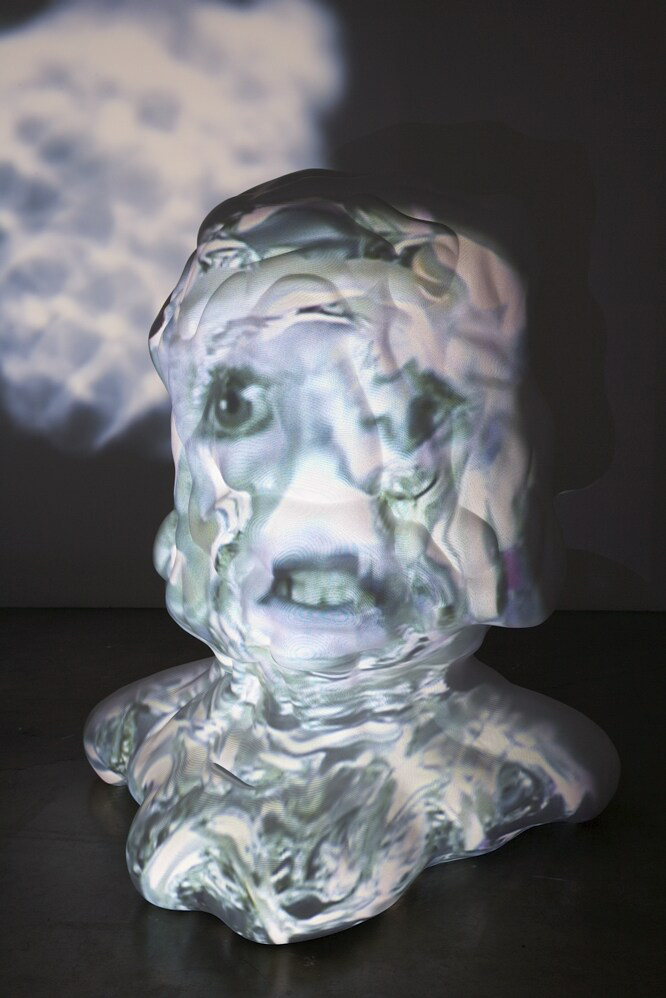
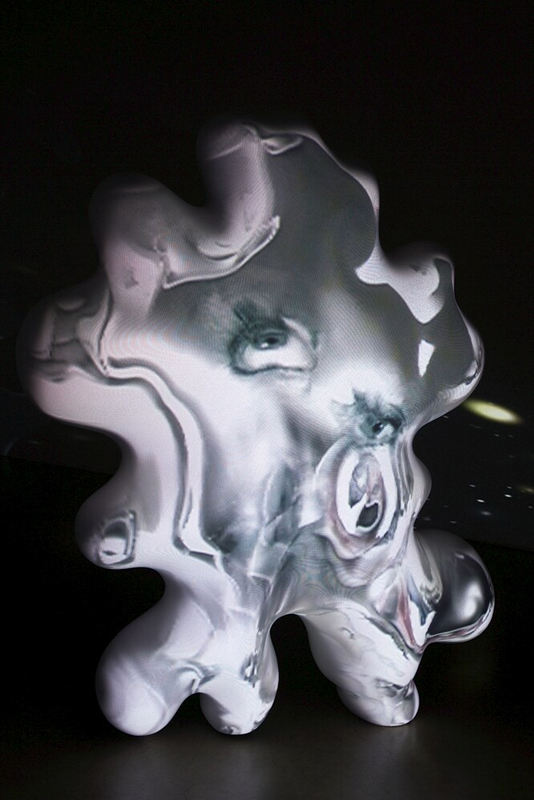
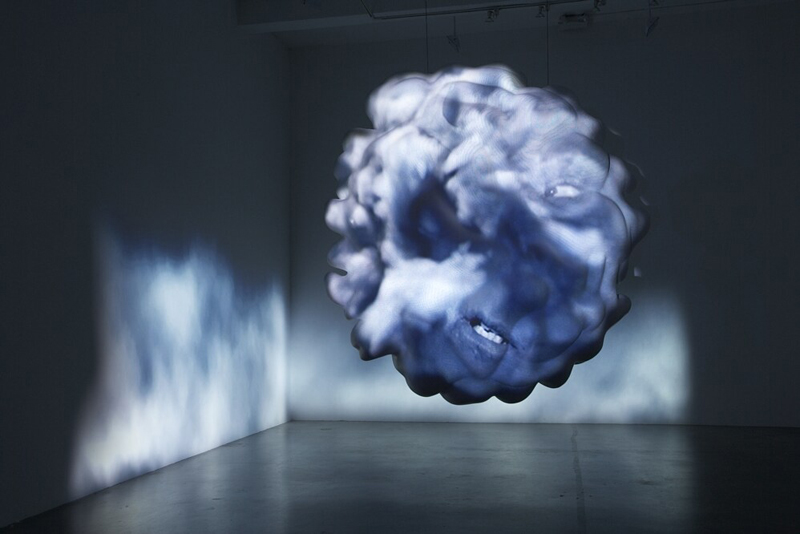
Inspired by the book Thought Forms and trance paintings by C.W. Leadbeater and Annie Besant, Oursler took three natural elements as his source material: dust, mercury, and water. Oursler painted the faces of his performers and continued to manipulate facial features through intensive computer manipulation and animation. The artist worked extensively with the New York non- profit organization Eyebeam to produce these images, and designed a 5.1 surround sound mix in each room to highlight the three-dimensionality of this combination of poetry and sound effects.
Oursler describes Thought Forms: "Nix, the water sculpture, has a slushy, melting appearance, while the background projection creates the impression of light reflecting off water at night. Mythological and environmental references are included in this personification of the element that covers most of this planet: water. The title refers to Nix, a water spirit that, by playful seduction, lures people into the water at night for the sinister purpose of drowning them. The myth is a departure point for speculation: is water taking revenge on humanity due to the stresses on the natural resource that we do not protect? The often quoted statistic that we are made of roughly 90% water is only one of the ways that we are all united by the element: drinking, sweating and waste output. Water is a sad salty teardrop and a vast oceanic expanse. As distasteful as it may be for some to realize, water is constantly traveling from body to body. The neutrality of water, which is odorless, tasteless and colorless, allows us to bend it to our will. Personified it would be a vulnerable pushover with no personality, yet it is capable of causing enormous natural disasters. This duality is captured in Nix.
"Mercury exaggerates our obsession with self-image by highlighting the naturally toxic and reflective mirror-like aspect of the element. Facial features have lost logical connections and are drifting, occasionally coming together only to fall away again. Rich in metaphor, it is a volatile element that is easily broken yet highly poisonous and often associated with madness. The background of the work is a starry night in motion, calling into question where exactly we are: On this planet or another? In a fantasy or hallucination? The scattered appearance and contra- dictory text refer to the complexities and banalities of daily life and mental illness. Brain chemistry shows that sometimes a few molecules make all the difference in the world. The phrase from dust to dust is a reminder of the temporal nature of life. Indexically, dust represents all man's endeavors ground down into bits and pieces, to be clearly read by anyone interested. Dust is suspended from the ceiling with projections on the two walls behind it. The dust cloud is floating in a barren landscape of suggestive rising smoke. As the sphere rolls, arms, eyes, legs, and mouths appear and disappear in the cloud of dust that swarms above our heads. It is in every breath we breathe. "All three installations share the state of flux, a point at which formation or dispersion could take place. Dust played an important part in the creation of this planet over millions of years, but could have just as easily never solidified. We still receive stardust, residue from the Big Bang, at the rate of one particle every few meters per day. These mix with a multitude of particles in our atmosphere from industrial waste, cremated bodies, bits of human skin and hair. To look at the small helps us to understand the larger picture. It's a mighty element generating thunderstorms in a continual cycle of building itself up to explosion, then depletion, only to repeat the process again and again."